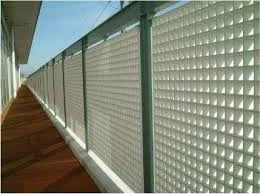
-
 Afrikaans
Afrikaans -
 Albanian
Albanian -
 Amharic
Amharic -
 Arabic
Arabic -
 Armenian
Armenian -
 Azerbaijani
Azerbaijani -
 Basque
Basque -
 Belarusian
Belarusian -
 Bengali
Bengali -
 Bosnian
Bosnian -
 Bulgarian
Bulgarian -
 Catalan
Catalan -
 Cebuano
Cebuano -
 China
China -
 China (Taiwan)
China (Taiwan) -
 Corsican
Corsican -
 Croatian
Croatian -
 Czech
Czech -
 Danish
Danish -
 Dutch
Dutch -
 English
English -
 Esperanto
Esperanto -
 Estonian
Estonian -
 Finnish
Finnish -
 French
French -
 Frisian
Frisian -
 Galician
Galician -
 Georgian
Georgian -
 German
German -
 Greek
Greek -
 Gujarati
Gujarati -
 Haitian Creole
Haitian Creole -
 hausa
hausa -
 hawaiian
hawaiian -
 Hebrew
Hebrew -
 Hindi
Hindi -
 Miao
Miao -
 Hungarian
Hungarian -
 Icelandic
Icelandic -
 igbo
igbo -
 Indonesian
Indonesian -
 irish
irish -
 Italian
Italian -
 Japanese
Japanese -
 Javanese
Javanese -
 Kannada
Kannada -
 kazakh
kazakh -
 Khmer
Khmer -
 Rwandese
Rwandese -
 Korean
Korean -
 Kurdish
Kurdish -
 Kyrgyz
Kyrgyz -
 Lao
Lao -
 Latin
Latin -
 Latvian
Latvian -
 Lithuanian
Lithuanian -
 Luxembourgish
Luxembourgish -
 Macedonian
Macedonian -
 Malgashi
Malgashi -
 Malay
Malay -
 Malayalam
Malayalam -
 Maltese
Maltese -
 Maori
Maori -
 Marathi
Marathi -
 Mongolian
Mongolian -
 Myanmar
Myanmar -
 Nepali
Nepali -
 Norwegian
Norwegian -
 Norwegian
Norwegian -
 Occitan
Occitan -
 Pashto
Pashto -
 Persian
Persian -
 Polish
Polish -
 Portuguese
Portuguese -
 Punjabi
Punjabi -
 Romanian
Romanian -
 Russian
Russian -
 Samoan
Samoan -
 Scottish Gaelic
Scottish Gaelic -
 Serbian
Serbian -
 Sesotho
Sesotho -
 Shona
Shona -
 Sindhi
Sindhi -
 Sinhala
Sinhala -
 Slovak
Slovak -
 Slovenian
Slovenian -
 Somali
Somali -
 Spanish
Spanish -
 Sundanese
Sundanese -
 Swahili
Swahili -
 Swedish
Swedish -
 Tagalog
Tagalog -
 Tajik
Tajik -
 Tamil
Tamil -
 Tatar
Tatar -
 Telugu
Telugu -
 Thai
Thai -
 Turkish
Turkish -
 Turkmen
Turkmen -
 Ukrainian
Ukrainian -
 Urdu
Urdu -
 Uighur
Uighur -
 Uzbek
Uzbek -
 Vietnamese
Vietnamese -
 Welsh
Welsh -
 Bantu
Bantu -
 Yiddish
Yiddish -
 Yoruba
Yoruba -
 Zulu
Zulu
frp settler
FRP Settler Revolutionizing Wastewater Treatment
In recent decades, the importance of sustainable practices in water management has become increasingly evident, particularly as industrial development and urbanization escalate the demand for effective wastewater treatment. Among the innovative solutions that have emerged is the Fiber Reinforced Plastic (FRP) settler, a cutting-edge technology that promises to enhance the efficiency and sustainability of wastewater treatment processes.
FRP settlers are designed to separate solids from liquids in wastewater through sedimentation, utilizing the lightweight yet strong properties of fiber-reinforced materials. This innovation is particularly significant in industries that generate large volumes of wastewater, including food and beverage, pharmaceuticals, and manufacturing. Traditional settling tanks, often constructed from concrete or metal, are heavy, prone to corrosion, and not always efficient in sedimentation. In contrast, FRP settlers not only mitigate corrosion risks but also provide a higher degree of customization to fit specific operational needs.
FRP Settler Revolutionizing Wastewater Treatment
Moreover, the lightweight nature of FRP materials facilitates easier installation and transportation. Unlike traditional settling tanks, FRP settlers can be prefabricated and brought to the site with minimal effort, reducing the time and costs associated with construction. This benefit is crucial for industries that require quick deployment to meet compliance standards or respond to urgent environmental concerns.
frp settler

In addition to practical benefits, the FRP settler contributes to enhanced environmental sustainability. By optimizing the sedimentation process, these settlers can improve the removal efficiency of suspended solids and other contaminants from wastewater. This, in turn, leads to lower pollutant loads being discharged into water bodies, thus helping industries comply with increasingly stringent environmental regulations. Furthermore, the reduced volume of sludge generated can lead to decreased disposal costs, ultimately promoting a more circular economy in wastewater management.
Beyond industrial applications, FRP settlers have the potential to be deployed in municipal wastewater treatment facilities. As cities expand and the pressure on existing infrastructure intensifies, innovative solutions like FRP settlers can provide municipalities with the tools they need to address wastewater challenges effectively. The ability to integrate these systems into existing treatment setups without extensive modifications is a significant advantage for urban planners and environmental engineers.
Moreover, as awareness of environmental issues rises and industries seek to adopt greener practices, the incorporation of FRP settlers can support corporate sustainability initiatives. By investing in advanced wastewater treatment technologies, companies demonstrate their commitment to reducing their ecological footprint, which can enhance their reputation and meet the growing consumer demand for environmentally responsible practices.
In conclusion, the emergence of FRP settlers is a promising development in the field of wastewater treatment. Their unique attributes—durability, lightweight nature, and enhanced performance—position them as a viable alternative to traditional settling methods. As industries and municipalities continue to grapple with the complexities of wastewater management, embracing technologies like FRP settlers will be essential in ensuring that we not only meet current demands but also pave the way for a more sustainable future. The integration of such innovative solutions is a vital step towards achieving a balance between industrial growth and environmental stewardship.









